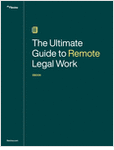61. Although this wartime situation was short-lived, lasting only from 1941 to 1945, it left bitter memories, not least in Bosnia and Herzegovina, large parts of which, including opstina Prijedor, were included in the puppet state of Croatia. The Second World War was for Yugoslavia a tragic time, marked by harsh repression, great hardship and the brutal treatment of minorities. It was a time of prolonged armed conflict, in part the product of civil war, in part a struggle against foreign invasion and subsequent occupation. Three distinct Yugoslav forces each fought one another: the Ustasa forces of the strongly nationalist Croatian State, supported by the Axis powers, the Chetniks, who were Serb nationalist and monarchist forces, and the Partisans, a largely communist and Serb group. At the same time the latter two opposed the German and Italian armies of occupation. The Partisans, under Josip Broz, later better known as Marshal Tito, did so consistently and with ultimate success, whereas the Chetniks’ role in this opposition to the invaders still remains a matter of great controversy. Although none of these three forces was predominantly Muslim, Muslims were to be found in the ranks of both the Ustasa and the Partisans.
62. Many of these hard-fought and bloody conflicts took place in Bosnia and Herzegovina and many of the outrages against civilians, especially though by no means exclusively by Ustasa forces against ethnic Serbs, also took place there, particularly in the border area between Croatia and Bosnia and Herzegovina, where the Partisans were especially active and which is the very area in which Prijedor lies. A minister of the wartime Croatian puppet government had promised to kill a third of the Serbs in its territory, deport a third and by force convert the remaining third to Catholicism. Another urged the cleansing of all of the greatly enlarged Croatia of “Serbian dirt”. Wholesale massacres of Serbs ensued; in six months of 1941 the Ustasa may have killed well over a quarter of a million Serbs, although the exact number is a subject of much controversy. Bulgarian and Hungarian occupying forces in other parts of Yugoslavia also engaged in massacres of Serbs and in ethnic cleansing. However, other ethnic groups also suffered in Prijedor, the Partisans killing many prominent Muslims and Croats in 1942 and again, in nearby Kozarac, in 1945.




